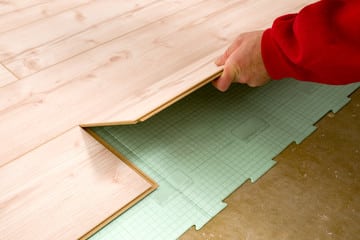Flooding can cause considerable problems in gardens. Plants suffer from the presence of stagnant water, which can lead to decomposition or root diseases. To resolve these concerns, different drainage techniques are available for flood-prone gardens.
Drainage planning
Before implementing an effective drainage solution, it is essential to study the terrain carefully. A good understanding of the nature of the soil, the slope and the source of flooding will allow you to choose the most suitable technique. It is also important to take the surrounding spaces into account, so as not to cause inconvenience to neighbors or the surrounding environment.
Improvement of soil structure
One of the simplest ways to promote drainage is to improve soil structure. The richer a soil is in organic matter, the better its infiltration and capacity to drain water. To do this, several options are available to you:
- Adding compost: Compost provides organic matter which helps improve the structure of the soil and facilitates water infiltration.
- Tillage: Deep plowing can facilitate the passage of water to lower areas. However, this technique must be carried out with caution to avoid soil compaction.
Drainage by canals and ditches
This is a common method for flood-prone areas, which involves digging canals or ditches to collect excess water. It is important to properly size these structures according to the expected water flow, as well as to maintain them regularly to guarantee their long-term effectiveness. These drainage systems can be combined with devices such as:
Absorbent wells or sumps
An absorbent well is a pit dug into the ground and filled with gravel or crushed stone which allows rapid infiltration of water. Inexpensive and simple to install, it constitutes an interesting solution when the nature of the soil allows sufficient infiltration.
Underground pipes or French drains
The French drain is a system of perforated pipes surrounded by gravel, installed underground and following a slight slope. Water easily seeps through the gravel layer and is carried away through the pipes, avoiding flooding problems.
Use of adapted vegetation
Opting for water-tolerant plants can help resist flooding. Certain species are in fact capable of withstanding periods of flooding and even contribute to the natural drainage of the soil through their root system. Among these plants, we can cite willow, marsh iris or even water mint.
In addition to contributing to drainage, these plants offer an aesthetic and natural appearance to your garden.
Installation of raised containers
Raised containers, also called vegetable gardens, allow plants to be grown outside of floodable soil. Made of wood, stone or recycled plastic, they can contain soil specially chosen to promote the development of plants. Raised containers have several advantages:
- Protection of crops against flooding
- Better control of the type of soil used
- Ease of access for the gardener
Installation of surface infiltration
Certain techniques make it easier to drain water directly onto the surface. Among these, we find:
Land leveling and gentle slopes
A slight slope in the land can help water flow to designated areas, away from sensitive areas such as buildings or crops. Carrying out professional leveling will guarantee you optimal results.
Permeable grass and draining coverings
There are specific materials and coatings that allow water to infiltrate more easily. Permeable pavers, for example, are designed to absorb and retain water while still performing their paving function}
Finally, choosing a lawn suitable for flood-prone areas is also essential. Certain varieties of grass have a particularly developed root system which promotes natural drainage.







